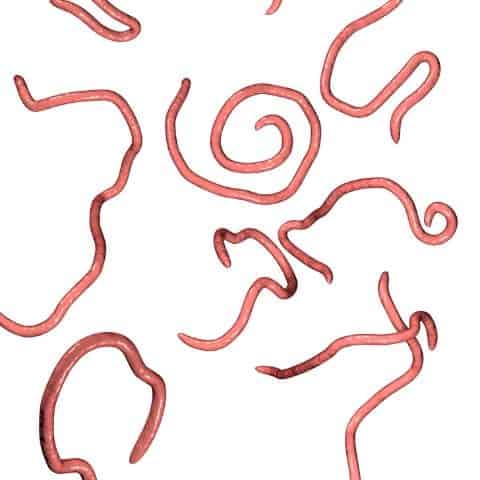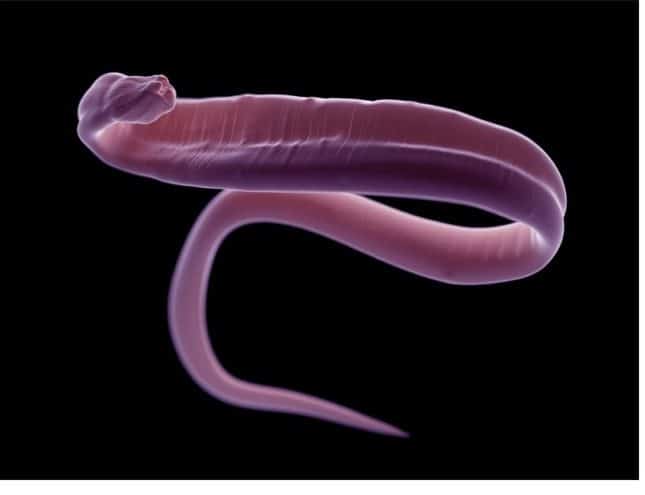There is often great confusion about the word “Nematodes”. Do they do any good or do they harm our plants? Some speak well of them, others describe them as the worst pest in our gardens. Where’s the truth?
First, let’s get to know these little creatures.
Nematodes are microscopic parasitic worms. Their length is usually between 2 and 5 mm. They are colorless and translucent and come in wormlike or cylindrical shape. They mostly live in the soil and feed on plant roots, leaves, and sometimes flowers. While some nematodes can do great damage and we refer to them as pests, some nematodes are used to our advantage, and they go by the name Beneficial Nematodes.
In this article, I will share with you all we need to know about beneficial nematodes (and never dared to ask)!
These tiny microscopic creatures have the power to revolutionize the ecosystem of our gardens and are becoming very popular as organic soil pest control. Nematodes are very effective because they can kill a wide range of garden pests before they become adults.
When is the best time to release beneficial nematodes?
If you live in a cool climate area, the best time to apply beneficial nematodes is in the spring (March-April) and the autumn (September – October). During these months the soil has the right humidity and temperature and the targeted pests are usually dwelling in the soil in their larval stage. Keep in mind that nematodes develop and reproduce according to the number of pests present. As the number of the latter decreases, so will the nematode population; that’s why seasonal releases are recommended. When the pests are eliminated the nematodes will die off and biodegrade. Then it’s possible to release them again in the next season.
If you live in a warmer climate, you can apply beneficial nematodes all year round.
The release of beneficial nematodes to the soil should be done in the late afternoon or early evening, so as not to expose them to sunlight (they are very sensitive to UV) and the soil temperature is lower than during the day. Their ideal soil temperature is between 48°F and 93°F (9-30°C).
How Do Nematodes Operate?
Beneficial nematodes have the power to kill over 100 kinds of pests from the insect family. Some act like cruisers, meaning that they roam around the soil looking for their prey, which ideally doesn’t move much, like white grubs or other larvae. Others will stay sedentary and wait to ambush their victims as they pass by.

Their way of hunting is a bit creepy but very effective: they enter the insect body through their openings (the anus, the mouth) and release a bacteria that kills the host within 48 hours. The infective juvenile nematodes then stay inside the body of the dead host to feed on it, develop and reproduce. As a matter of fact, several generations may live and reproduce inside the dead host, till the source of food ends.
The life cycle of beneficial nematodes consists of six phases: egg stage, four juvenile stages, and an adult stage. When buying nematodes, we usually get them in their juvenile stage.
Nematodes are ideal for organic pest control since they are safe to use around humans and pets. They do not harm beneficial insects, pollinators nor our beloved plants. They will only attack soil dwelling larvae but luckily will leave earthworms alone.
How To Release Beneficial Nematodes To The Soil
Let’s say you have just received your package of beneficial nematodes and are eager to release them into the soil to see their effectiveness (assuming that they arrived well and alive). Before doing so, just take a few small steps to make things right.
- The first golden rule about nematode application is moisture. Nematodes love moisture and they would not be able to operate in dry soil. Therefore, before releasing them into your soil, make sure you water well.
- Check the label of nematodes on your package. The supplier might suggest which application is the best for that particular specie.
- Avoid the use of fertilizers and fungicides for at least two weeks before releasing nematodes. They might not react well to their high nitrogen content.
- The equipment you need for the application of beneficial nematodes is quite simple: you could use hose-end sprayers, pump sprayers, fan, and aerial sprayers and watering cans. Everything will do the job.
- Mix the nematodes with water and stir well in order to break any lumps. Let the solution soak for a few minutes.
- According to the equipment you have, spray the solution on the soil near to your plants.
- From time to time mix the solution again or shake it to prevent the nematodes from sinking to the bottom.
- For best results, remember to water your garden well and keep the soil moist for at least two weeks after application.

After the application, wait about a week to see the first results. Within a month the nematodes should reach the maximum of their efficacy.
One good thing about the application of beneficial nematodes is that it is completely safe, so there is no need to wear protective gear, such as you would before the application of other pesticides. Besides, there are no restrictions and can be legally used on all crops.
Last, but not least, what makes beneficial nematodes one of the best organic pest control, in the long run, is that pests don’t develop resistance with time (as it happens with pesticide).

Comics by AnatPlantz
What To Consider When Buying Beneficial Nematodes
Many companies breed nematodes for sale. These little creatures usually are shipped in the infectious larvae stage of their life, ready to be mixed with water and released into the soil.
Unfortunately, not all suppliers are reliable and many times the end customer receives packages of dead nematodes without their knowledge (unless you own a microscope, it is really hard to tell if they are dead or alive). A reason for this is that the nematodes did not survive the stress of shipping or they were stored for a long period without the ideal condition.
The recommended amount of nematodes you need is about 13,000 to 35,000 per square foot, depending on the type of pest you target. Always check on the package if the company listed the number of nematodes present. Avoid buying when this information is not mentioned on the package.
How To Store Beneficial Nematodes
There are a few simple rules for storing beneficial nematodes. The most important thing is that once the nematodes have been activated, meaning mixed with water, you need to release them into the soil within a few hours. You can follow these rules to store beneficial nematodes:
- You can store non-activated nematodes in the refrigerator for up to a month. Their ideal temperature is between 36 -45°F (2-7° c). Do NOT freeze them, since they are living organisms and therefore would die.
- Do not expose them to heat or direct sunlight.
- Do not leave them on your spray tank for a long period of time. They will not survive and you would just release useless dead nematodes to the soil.
- Do not expose them to ultraviolet light (UV). They love the dark.
- As a general rule, I would not mix them with other pesticides, as they are very sensitive to other chemicals.
- Follow the instructions on your package.
List Of Pests That Are Most Affected By Beneficial Nematodes
Beneficial nematodes are very effective against:
- Ants
- Armyworms
- Black Vine Weevils
- Bill-bugs
- Cabbage root Maggots
- Carrot Weevils
- Citrus Weevils
- Cutworms
- European Chafer
- Fly larvae
- Fleas
- Fungus Gnats
- German cockroaches
- Grubs
- Iris Borer
- Japanese beetles
- Mole Crickets
- Oriental beetles
- Rose Chafer
- Root Maggots
- Sciarid Larvae
- Strawberry Root Weevils
- Termites
Some of the links above are affiliate links, meaning, at no additional cost to you, I will earn a commission if you click through and make a purchase.
Hope you enjoyed my post! You might also be interested in these articles:
How To Kill Bugs In Your Soil: 5 Tips For Organic Pest Control
What’s the Difference Between Cutworms and Grubs?
How To Identify Symptoms Of Root-Knot Nematodes In The Garden

